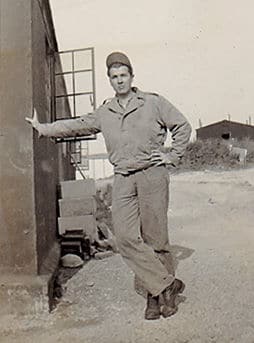Columnist’s note: You might ask why the National WWII Museum is in New Orleans, a city known more for partying, music and hurricanes (both the weather kind and the ones from Pat O’Brien’s). If you’ve seen the landings of the troops during D-Day, you’ve seen the Higgins Boats used to bring men to shore. Those boats were designed and built in New Orleans by Higgins Industries. The museum, an affiliate of the Smithsonian Institution, was originally known as the D-Day Museum, but broadened its focus soon after opening in 2000. Learn more at http://www.nationalww2museum.org
I didn’t plan to be The National WWII Museum on Veterans Day, but there I was.
The museum is impressive enough, but to see the museum as several hundred World War II veterans toured it as well was, truthfully, “lump in the throat” time.
Museums can be cold places, full of artifacts, dry recitations of facts and displays that create distance between the viewer and the subject rather than drawing one closer. That wasn’t the case on Veterans Day. Many veterans were there with many family members helping them navigate the museum. World War II veterans are not young – there are approximately 855,070 veterans remaining of the 16 million who served in the war, according to the museum.
My father – Billy Francis – is one of them. He served in the Army Air Corp., the forerunner of the Air Force. Even though, at 93, he is in good health, he would have trouble navigating the museum. There were plenty of wheelchairs, canes and walkers in evidence during my visit.
But I wish he had been there. The National WWII Museumin New Orleans is nothing if not dedicated to gathering the materials America used during the war.
And those materials were the fabric of my father’s war stories. That’s particularly so since he was an airplane mechanic during the war. The museum has these on vivid display – a C-47 Skytrain hanging there, a B-17 Flying Fortress over here, a Pratt & Whitney engine with a cutaway view.
All these artifacts contribute to my father’s war stories. I call them war stories, but they are really the stories of a 19-year-old boy becoming a man with the war as a violent, ever-threatening backdrop.
One tale involves a C-87 – a transport version of the B-24 Liberator – that had been overloaded with tires, equipment and 10 hitchhikers looking for a ride back to Paris from a makeshift airfield in rural France. As a mechanic, my father knew the plane’s landing gear had been reinforced, so he told the pilot he thought they could take off safely using the field at the end of the runway to gain enough speed to lift off. With my father calling off the air speed, the overloaded plane rambled down the runway. My dad still remembers a man riding a bicycle on the road in front of them ditching the bicycle and diving into the ditch and one of the passengers crying “Uh-oh,” as the plane barely cleared power lines as it struggled to take flight. The pilot had been confident he could make it, my dad says, but he still let out a deep sigh of relief once the plane was in the air.
The museum does a good job of telling stories such as this, with lots of videos and interviews with veterans. Each visitor also gets a dog tag to follow one GI’s story through the war. My guy was Gen. Benjamin Davis Jr., the first African-American general and commander of the Tuskegee Airmen. Check out the museum while there’s still time to hear stories from the World War II veterans themselves.
Robert Francis is editor of Fort Worth Business






